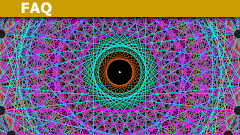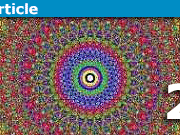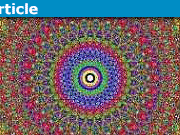What is Lie algebra? A 5 Minute Introduction
Table of Contents
Definition/Summary
A Lie algebra (“Lee”) is a set of generators of a Lie group. It is a basis of the tangent space around a Lie group’s identity element, the space of differences between elements close to the identity element and the identity element itself.
Lie algebras include a binary, bi-linear, anti-symmetric operation: commutation. The commutator of two basis vectors is a linear combination of the algebra’s basis vectors (closure).
Lie algebras are valuable as a proxy for Lie groups. They are often more convenient to study than the groups that they generate, and much of what is known about Lie groups has come from studying their algebras, like their representation theory. One has to be careful about global properties, however; groups with isomorphic algebras need not be isomorphic, such as SO(3) and SU(2).
Equations
Commutator:
For matrices: [A,B] = A.B – B.A
For operators: [A,B](X) = A(B(X)) – B(A(X))
The commutator satisfies the Jacobi identity:
[A,[B,C]] + [B,[C,A]] + [C,[A,B]] = 0
For algebra basis L,
[itex][L_i,L_j] = f_{ij}{}^k L_k[/itex]
using the Einstein summation convention, where the f’s are the algebra’s structure constants. One can use antisymmetry and the Jacobi identity to get constraints on possible f values:
[itex]f_{ji}{}^k = – f_{ij}^k[/itex]
[itex]f_{ij}{}^a f_{ak}^b + f_{jk}{}^a f_{ai}^b + f_{ki}{}^a f_{aj}^b = 0[/itex]
Bilinearity:
[itex][a^i L_i, b^j L_j] = a^i b^j L_{ij}^k L_k[/itex]
One can find a metric for an algebra given its structure constants:
[itex]g_{ij} = f_{ia}{}^b f_{jb}^{a}[/itex]
For a semisimple Lie algebra, it will be invertible.
Extended explanation
Here is a demonstration that non-isomorphic Lie groups can have isomorphic Lie algebras. Consider the quaternion representation for Lie groups SU(2) and SO(3). It gives those groups’ elements in terms of a unit quaternion
q = {q[sub]0[/sub], q[sub]1[/sub], q[sub]2[/sub], q[sub]3[/sub]}:
SU(2):
[itex]D(q) = q_0 I_2 + \sum_{k=1}^3 q_k \sigma_k = \begin{pmatrix} q_0 + i q_3 & i q_1 + q_2 \\ i q_1 – q_2 & q_0 – i q_3 \end{pmatrix}[/itex]
SO(3):
[itex]D(q) = \begin{pmatrix} q_0^2 + q_1^2 – q_2^2 – q_3^2 & 2 q_1 q_2 + 2 q_0 q_3 & 2 q_1 q_3 – 2 q_0 q_2 \\ 2 q_1 q_2 – 2 q_0 q_3 & q_0^2 – q_1^2 + q_2^2 – q_3^2 & 2 q_2 q_3 + 2 q_0 q_1 \\ 2 q_1 q_3 + 2 q_0 q_2 & 2 q_2 q_3 – 2 q_0 q_1 & q_0^2 – q_1^2 – q_2^2 + q_3^2 \end{pmatrix} [/itex]
Their Lie algebras, found by taking – (i/2)*(d/d(q[sub]1[/sub], q[sub]2[/sub], q[sub]3[/sub])) at the identity element, q = {1,0,0,0}:
SU(2):
[itex]L_1 = \frac12 \begin{pmatrix} 0 & 1 \\ 1 & 0 \end{pmatrix} ,\ L_2 = \frac12 \begin{pmatrix} 0 & -i \\ i & 0 \end{pmatrix} ,\ L_3 = \frac12 \begin{pmatrix} 1 & 0 \\ 0 & -1 \end{pmatrix}[/itex]
SO(3):
[itex]L_1 = -i \begin{pmatrix} 0 & 0 & 0 \\ 0 & 0 & 1 \\ 0 & -1 & 0 \end{pmatrix} ,\ L_2 = -i \begin{pmatrix} 0 & 0 & -1 \\ 0 & 0 & 0 \\ 1 & 0 & 0 \end{pmatrix} ,\ L_3 = -i \begin{pmatrix} 0 & 1 & 0 \\ -1 & 0 & 0 \\ 0 & 0 & 0 \end{pmatrix}[/itex]
Both algebras satisfy [itex][L_i,L_j] = i \epsilon_{ijk} L_k[/itex], thus making them isomorphic, but the groups are not isomorphic. Reverse the sign of q:
SU(2): D(-q) = – D(q)
SO(3): D(-q) = D(q)
SU(2) thus has Z(2), {I,-I} as a normal subgroup, with SO(3) as that subgroup’s quotient group.
Commutator series carry over from group theory. Here, [A,B] is the algebra generated by the commutators of every element of A with every element of B.
The derived series of an algebra G is
[itex]G^{(0)} = G[/itex]
[itex]G^{(n)} = [G^{(n-1)}, G^{(n-1)}][/itex]
If it converges on the empty algebra, then G is solvable.
The lower central series of an algebra G is
[itex]G_0 = G[/itex]
[itex]G_n = [G_{n-1}, G][/itex]
If it converges on the empty algebra, then G is nilpotent.
Every nilpotent algebra is solvable, though the converse is not necessarily true.
For an algebra G, a subalgebra J is an ideal of it if [G,J] is contained in J. The Lie group generated by J is a normal subgroup of the group generated by G.
Every finite-dimensional Lie algebra has a unique maximal solvable idea, its radical.
If an algebra’s radical is the empty algebra, then it is semisimple, and if an algebra has no nontrivial ideals, nonother than itself and the empty algebra, then it is simple. A semisimple algebra can be decomposed into a sum of simple algebra.
From an algebra’s radical, one can find the algebra’s “Levi decomposition” into that radical and its “Levi subalgebra”, a semisimple algebra.
To illustrate, let us consider the algebra Euc(n), the generators of translations and rotations of the Euclidean group for n dimensions, the group of isometries of an n-dimensional Euclidean space.
Euc(n) can be decomposed into a sum of T[sup]n[/sup], its translation-generator subalgebra, and SO(n), its rotation-generator subalgebra. T[sup]n[/sup] is nilpotent, while SO(n) is the empty algebra for n = 1, nilpotent for n = 2, and semisimple for n >= 3.
Euc(1) is nilpotent. Its radical is itself.
Euc(2) is solvable but not nilpotent. Its lower central series converges on T[sup]2[/sup]. Its radical is itself.
For n >= 3, Euc(3) has radical T[sup]n[/sup] and Levi subalgebra SO(n).
See also:
https://www.physicsforums.com/insights/lie-algebras-a-walkthrough-the-basics/ (3 parts)
https://www.physicsforums.com/insights/journey-manifold-su2mathbbc-part/ (2 parts)
This article was authored by several Physics Forums members with PhDs in physics or mathematics.










Leave a Reply
Want to join the discussion?Feel free to contribute!